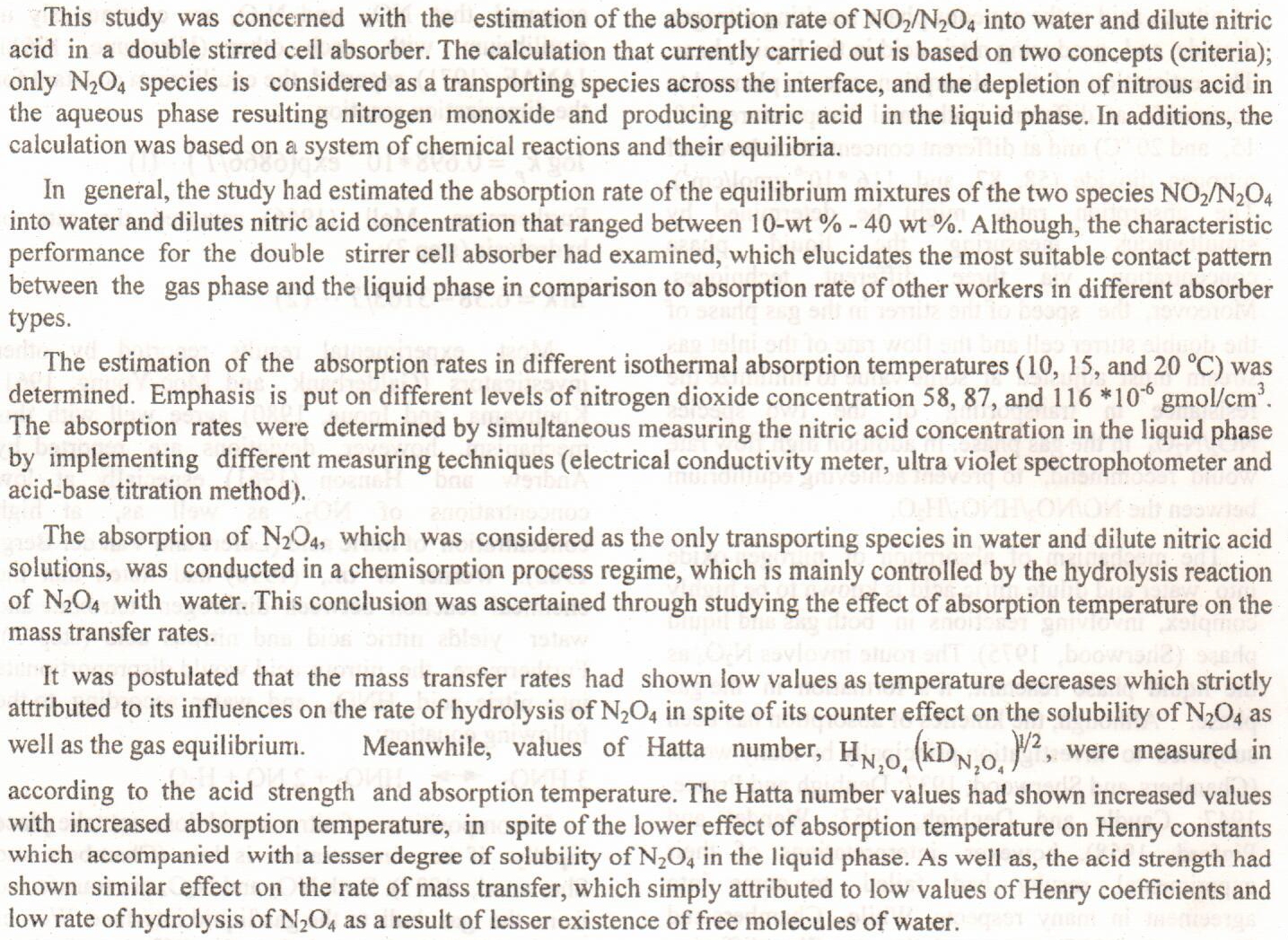
Mandali Basin is located between latitudes (33◦ 39' 00" and 33◦
54' 55") to the north and longitudes (45ο 11' 00" and 45ο 40' 00") to the
east; to the east of Diyala province at the Iraqi-Iranian border; the
basin area is approximately 491 km2.
From the study of climate reality of the basin between 1990-
2013and assessment of the basic climate transactions, it was found
that the annual rate of rainfall is 253.02 mm, the relative humidity
(44.4%), the temperature (21.3 ◦C), wind speed (2.08 m /sec.),
sunshine (8.27 h/day) and evaporation of the basin class (a) (271.98
mm) and corrected potential evapotranspiration (80.03 mm). The
results of the data analysis show that, there are
 (6)
(6)
 (1)
(1)
This study aimed to obtain a local isolation of Aspergillus niger and then studied its ability to produce citric acid from raw materials available locally using solid state fermentation. Six local isolates were collected from different sources including some samples of the damaged fruits such as grapefruit, oranges and sindi. Wheat bran was used as a raw material or as culture medium for the production of citric acid from the collected isolates. The conditions for citric acid production were determined by humidity percentage of 1: 1 (water: culture medium), temperature of 28 C, pH 4 and inoculum dose with 5× 106 spore/ml and for 3 days of incubation. The orange was the best model for citric acid production with a concentration of 12.8 mg/m
... Show More (4)
(4)
 (2)
(2)
MCM-48 zeolites have unique properties from the surfaces and structure point of view as it’s shown in the results ,and unique and very sensitive to be prepared, have been experimentally prepared and utilized as a second-generation/ acid - catalyst for esterification reactions of oleic acid as a model oil for a free fatty acid source with Ethanol. The characterization of the catalyst used in the reaction has been identified by various methods indicating the prepared MCM-48 is highly matching the profile of common commercial MCM-48 zeolite. The XRF results show domination of SiO2 on the chemical structure with 99.1% and agreeable with the expected from MCM-48 for it's of silica-based, and the SEM results show the cubic c
... Show More (2)
(2)
Steps were taken to obtain the Kojic acid crystals from local fungal isolation A. flavus WJF81 by separating the fermentation products from the fungus mycelium from the production plant at the centrifuge at a speed of 5000 cycles for 10 minutes. The extraction was followed by ethyl acetate then supernatant concentrate by using rotary evaporator, and dried with heat oven 37ºC. Long, yellowish, pristine acid crystals were obtained that examined the optical microscope with a magnification force of 10x and 40x. The melting point of kojic acid was determined between 152.9-153.5 °C Results of the diagnosis of Kojic acid by applying High pressure liquid chromatography HPLC technique showed that the acid was at one peak, which was close to the
... Show MoreMixed ligand metal complexes are synthesized from oxalic acid with Schiff base, and the Schiff base was obtained from trimethoprim and acetylacetone. The synthesized complexes were of the type [M(L1)(L2)], where the metal, M, is Ni(II), Cu(II), Cr(III), and Zn(II), L1 corresponds to the trimethoprim ((Z)-4-((4-amino-5-(3,4,5- trimethoxybenzyl)pyrimidine-2-yl)imino)pentane-2-one) as the first ligand and L2 represent the oxalate anion (𝐶𝑂 ) as a second ligand. Characterization of the prepared compounds was performed by elemental analysis, molar conductivity, magnetic measurements, 1H-NMR, 13C-NMR, FT-IR, and Ultraviolet-visible (UV-Vis) spectral studies. The recorded infrared data is reinforced with density functional th
... Show MoreMixed ligand metal complexes are synthesized from oxalic acid with Schiff base, and the Schiff base was obtained from trimethoprim and acetylacetone. The synthesized complexes were of the type [M(L1)(L2)], where the metal, M, is Ni(II), Cu(II), Cr(III), and Zn(II), L1 corresponds to the trimethoprim ((Z)-4-((4-amino-5-(3,4,5-trimethoxybenzyl)pyrimidine-2-yl)imino)pentane-2-one) as the first ligand and L2 represent the oxalate anion ( ) as a second ligand. Characterization of the prepared compounds was performed by elemental analysis, molar conductivity, magnetic measurements, 1H-NMR, 13C-NMR, FT-IR, and Ultraviolet-visible (UV-Vis) spectral studies. The recorded infrared data is reinforced with density functional theory (DFT) calcul
... Show More (12)
(12)
 (3)
(3)
This work aims to study the exploding copper wire plasma parameters by optical emission spectroscopy. The emission spectra of the copper plasma have been recorded and analyzed The plasma electron temperature (Te), was calculated by Boltzmann plot, and the electron density (ne) calculated by using Stark broadening method for different copper wire diameter (0.18, 0.24 and 0.3 mm) and current
of 75A in distilled water. The hydrogen (Hα line) 656.279 nm was used to calculate the electron density for different wire diameters by Stark broadening. It was found that the electron density ne decrease from 22.4×1016 cm-3 to 17×1016 cm-3 with increasing wire diameter from 0.18 mm to 0.3 mm while the electron temperatures increase from 0.741 to
 (3)
(3)
 (1)
(1)
In this study 100 samples were collected from infected children with acute and chronic tonsillitis who attended to Al-Yarmook Teaching Hospital (ENT consultation clinic) from 5/12/2013 to 1/3/2014. The result of laboratory culture was positive in 67 samples. Depending on their cultural, morphological and biochemical characterization of bacterial isolate of them were identified as (37.31%) belonged to Streptococcus pyogenes and the diagnosis is confirmed by the use of Remel Rapid STR System, (34.32%) belonged to S.parasanguinis, (11.94%) S.mitis, (11.94%) S.oralis and (4.47%) S.thoraltensis . Results confirmed that cup assay gave highest inhibition zone after 24 hrs compare with well diffusion methods for suspension of L.
... Show More